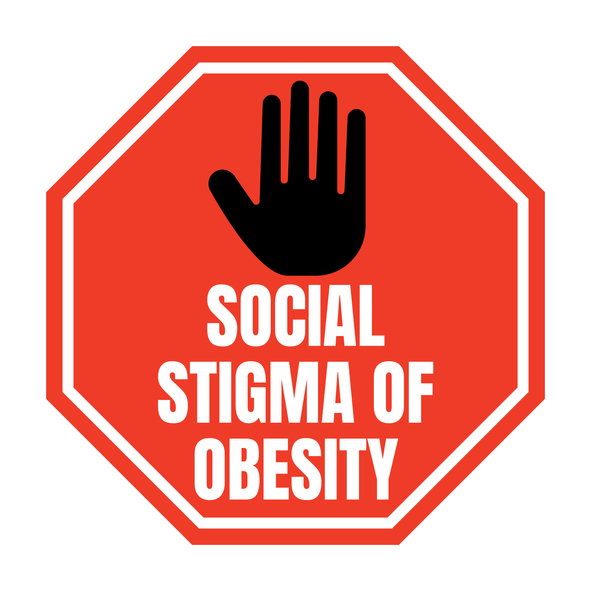A sobering new report by the nation’s peak body for obesity titled A Time for Action, finds the number of Australians living with obesity jumped from 3.9 million in 2012 to 6.3 million in 2022.
Latest ABS figures show the highest prevalence growth rates have been in high-risk obesity (class 3), which increased by 48 per cent in the decade to 2022, and moderate risk (class 2), which increased by 23 per cent over the same period.
In some good news, the growth in the proportion of Australians who are overweight (but not obese) is down from 35.6% to 34% in the past four years.
The Obesity Collective Director Tiffany Petre said the results for high-risk obesity are not surprising and indicate we are failing people most impacted by obesity.
“We’re seeing the number of Australians with severe weight issues continue to grow. That’s where the biggest health issues present, which most impact people’s wellbeing,” said Ms Petre.
“Those most impacted by obesity are much more likely to have chronic health conditions needing treatment over a long period. It makes sense to support people to manage their health earlier, before health conditions become severe.”
She said overweight and obesity is linked to over 30 diseases, including 17 types of cancers, cardiovascular diseases, musculoskeletal conditions, type 2 diabetes, dementia, asthma and chronic kidney disease.
“The economic imperative for action on obesity is clear with the cost of not addressing obesity projected to be over $235 billion within 40 years.”
Collective Leader, Prof Louise Baur AM Pres FAHMS – Chair of Child & Adolescent Health, University of Sydney, Consultant Paediatrician and President of the World Obesity Federation says, “We know from our research and clinical experts that those with the most severe weight issues are being failed by the health system.”
“The health system too often treats the symptoms and not the underlying health and mental health issues driving weight gain,” Prof Baur said.
“Stigma is by far the biggest driver of the obesity epidemic – it permeates the way society deals with the issue by blaming individuals when it is clearly a societal challenge. We hear countless stories of people being told to simply exercise and eat better when there is always more than meets the eye with obesity.
“Our 21st century world makes it difficult for children, young people and their families to lead healthy lives.
“Too often, the unhealthy choices – around food, physical activity, sedentary pursuits and sleep – are now the default choices available, especially for those living in more disadvantaged areas.”
Collective Leader Kathryn Backholer – Professor of Global Public Health Policy, Institute for Health Transformation, Deakin University emphasises the harms from our unhealthy environments.
“Our kids are bombarded with junk food ads everyday as they go about their daily lives. This has been shown to reduce diet quality, leading to excess weight gain, and undermines parents’ desires to provide healthy foods for their children.
“We want to see government-led regulation to protect children from exposure to unhealthy food marketing across all media.”
Collective Leader Dr Terri-Lynne South – General Practitioner, a registered dietitian, Chairperson of the RACGP Specific Interest in Obesity Medicine group adds, “In healthcare we simply must do more to educate people, including health professionals, about the need to look at the underlying causes of weight issues and invest in person-centred and evidence-based care, and the health system isn’t currently set up to do that well.”
“There are many different things that can affect a person’s risks for obesity. A person may have a genetic predisposition towards obesity, for example. Or over-eating may be a trauma-response, unhealthy food may be more affordable in some areas, or exercise may be a luxury that is out of reach.”
Collective Leader and chair of Obesity Australia and Academic Director of the Charles Perkins Centre at The University of Sydney Prof Stephen Simpson AC FAA FRS says we must recognise that obesity is a normal physiological response to our unhealthy and obesity promoting environments.
“Some people are more impacted than others for a range of reasons, including genetic predisposition and early life environmental impacts.
“We celebrated the launch of the National Obesity Strategy 2 years ago as a positive step but have seen little action from Government since. Obesity needs to be a national priority.”
The Obesity Collective’s federal budget submission urges Government to invest in initiatives to make our environments healthier, provide better healthcare for people with obesity and to tackle harmful and counterproductive weight stigma.
“If we took more action to improve our environments and people were better supported to manage their weight and health, before chronic conditions arise or escalate, many of these costs could be avoided,” Prof Simpson said.
The report also highlights the relationship between obesity and disadvantage, with higher rates of obesity in rural and regional areas, poor communities, areas with lower levels of education, and Indigenous communities.
Collective Leader, Executive Director Health Consumers Council WA and Chair Weight Issues Network, Clare Mullen, says ” For years people impacted by obesity have been made to feel ashamed and have been blamed for lacking discipline.”
“The science is clear – this approach is harmful. We can’t address the health impacts of obesity without addressing weight stigma. We must do more to move past outdated beliefs about the drivers of obesity and focus our attention on creating the conditions where more people can reach their health goals.”







